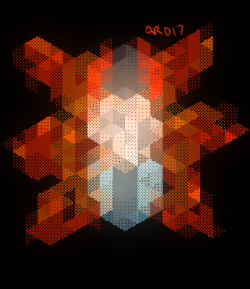

The proposed scheme has been tested using state-of-the-art key performance indicators including information theory-based analysis, Histogram based analysis, analysis based on pixels difference, correlation-based measurements, and distance-based analysis. Due to the simplicity and computational efficiency of the diffusion process of a 3-cell cellular neural network, the confusion created by predefined S-boxes, and the data hiding scheme effectively reduces the time for encryption and data hiding. Less computational complexity without affecting the strength of the security scheme is the need of the day. The encrypted data are the hide in the cover image, the data hiding process comprises three steps, generation of transform matrix from the cover image, embedding matrix from transform matrix and secret encrypted image and the last step is to obtain a stego image.
Hexels 70 gb generator#
We have utilized 3-Cell Cellular Neural Network (CNN) system to generate a pseudorandom number generator to fulfill diffusion requirements of a cryptosystem, and then utilizing highly non-linear substitution boxes (S-boxes) to complete the confusion process of cryptosystem design. In this work, we have proposed a dual-layer information hiding mechanism. The security of digital information is one of the significant problems of the existing world. We provide recommendations on the formation of spreading sequences to reliably and safely hide informational messages in audio files. The results of our research enable us to find out which method of forming chip codes gives a lower BER with equal PSNR. The article also evaluates the distortion of an audio container by the peak signal-to-noise ratio (PSNR). We conducted experimental studies and estimated the bit error rate (BER) in the recovered data. We considered various spreading sequences (chip codes) and also explored their use for hiding information in audio files. In particular, we investigated the direct spread spectrum in the context of the development of methods for hiding data in audio containers. The purpose of our study was to investigate new technologies for hiding data in multimedia files. We researched this technology for other implementations. In addition, spread spectrum technology provides the transmitted signals with a noise-like appearance, thus hiding the semantic content of the messages. It ensures high security and reliability of information transfer. Applications for such a data-hiding scheme include in-band captioning, covert communication, image tamperproofing, authentication, embedded control, and revision tracking.ĭirect spread spectrum technology is traditionally used in radio communication systems with multiple access, for example, in CDMA standards, in global satellite navigation systems, in Wi-Fi network wireless protocols, etc. A message embedded by this method can be in the form of text, imagery, or any other digital signal. Image restoration, error-control coding, and techniques similar to spread spectrum are described, and the performance of the system is illustrated. The hidden message can be recovered using appropriate keys without any knowledge of the original image. This system hides and recovers a message of substantial length within digital imagery while maintaining the original image size and dynamic range. Following a discussion of steganographic communication theory and review of existing techniques, the new method, SSIS, is introduced. Steganography, which means "covered writing" in Greek, is the science of communicating in a hidden manner.

In this paper, we present a new method of digital steganography, entitled spread spectrum image steganography (SSIS).


 0 kommentar(er)
0 kommentar(er)
